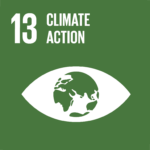The Emissions Gap Report is UNEP’s spotlight report launched annually in advance of the annual Climate negotiations. The EGR tracks the gap between where global emissions are heading with current country commitments and where they ought to be to limit warming to 1.5°C. Each edition explores ways to bridge the emissions gap.
As greenhouse gas emissions hit new highs, temperature records tumble and climate impacts intensify, theEmissions Gap Report 2023: Broken Record – Temperatures hit new highs, yet world fails to cut emissions (again)finds that the world is heading for a temperature rise far above the Paris Agreement goals unless countries deliver more than they have promised.
The report is the 14th edition in a series that brings together many of the world’s top climate scientists to look at future trends in greenhouse gas emissions and provide potential solutions to the challenge of global warming.
RELEVANT SUSTAINABLE GOALS



What’s new in this year’s report
The report finds that there has been progress since the Paris Agreement was signed in 2015. Greenhouse gas emissions in 2030, based on policies in place, were projected to increase by 16 per cent at the time of the agreement’s adoption. Today, the projected increase is 3 per cent. However, predicted 2030 greenhouse gas emissions still must fall by 28 per cent for the Paris Agreement 2°C pathway and 42 per cent for the 1.5°C pathway.
As things stand, fully implementing unconditional Nationally Determined Contributions (NDCs) made under the Paris Agreement would put the world on track for limiting temperature rise to 2.9°C above pre-industrial levels this century. Fully implementing conditional NDCs would lower this to 2.5°C.
The original article can be found here.
Lead image courtesy of UNEP.



